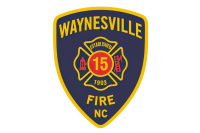Peanut butter log is the bomb
This past summer I stopped feeding birds, except for the hummers. The squirrels had become too brazen and were chewing everything and anything on the deck and beating on the windows, demanding food.
Birds have no trouble finding food in the summer, and they fare just fine in winter unless heavy snow and/or freezing conditions persist. Most people, like me, feed birds because they enjoy the feathery company. Now don’t get me wrong, a fresh clean energy source during the winter does no harm, but most birds would survive just fine without it.
I began feeding again in late fall. I like to check out who our winter visitors might be and, as I said, I like the company especially in winter when there are not as many birds in the landscape.
Even after a few months of no food, it only took two days for the fresh buffet to be discovered.
There are currently 14 species that visit my feeders on a daily basis — mourning dove, red-bellied woodpecker, downy woodpecker, Carolina chickadee, tufted titmouse, white-breasted nuthatch, Carolina wren, northern cardinal, purple finch, pine siskin, American goldfinch, eastern towhee, dark-eyed junco, and song sparrow. To add to this list, pileated woodpecker, yellow-bellied sapsucker, eastern phoebe, blue jay, brown creeper, American robin and golden-crowned kinglet are commonly seen or heard in the yard.
Related Items
I feed with black oil sunflower seeds, mixed small birdseed, Niger thistle and peanut butter. I offer the sunflower seed in a gazebo-type feeder, a small platform feeder, a wire-basket feeder (in case the squirrels commandeer the platform and gazebo), and if it gets really crowded, I spread some sunflower seed along the deck railing. Everybody likes sunflower seed, from squirrels to doves to woodpeckers to chickadees.
I broadcast the small seed mixture over some exposed rocks next to a holly tree that the birds like for cover. I used to have a small platform feeder on the ground, but the rocks serve the same purpose — plus the sparrows and towhees like to scratch in the leaf litter as if they were foraging in the wild.
I have one long tube feeder with small openings for the thistle. I sometimes think of adding another one or getting one with more feeding stations. The jostling for the eight perches can get pretty heated, especially when pine siskins are present in large numbers. But the jostling shakes a lot of seed out and the finches that don’t get perches seem content to go to the ground for their meal.
The peanut butter feeder may be my favorite to watch because of the way different birds approach it. The feeder was originally a commercial suet log — a small log or branch about three inches in diameter and 18 inches long with four 2-inch holes drilled through it and filled with suet.
I modified it a little after the suet was devoured. The log was for clinging birds like woodpeckers and nuthatches. I decided to be a little more egalitarian and added a few nails for perches so chickadees and such could also partake of the treat.
I don’t have any lard around my house, so I substituted peanut butter. I mix cornmeal to aid with digestion and throw in a liberal amount of small seeds. The birds seem happy.
Downy and red-bellied woodpeckers will sometimes cling for minutes on the side of the feeder, pecking away in the peanut butter. The nuthatches like to dig in from above the holes – I guess it simulates their usual headfirst foraging in the wild. And the chickadees titmice and others seem to appreciate the perches.
The Carolina wren comes often, sticks its long curved bill in, pulls it out, throws back its head and gulps large chunks of the mixture. I hope I don’t have to call the Betty Ford peanut butter clinic.









